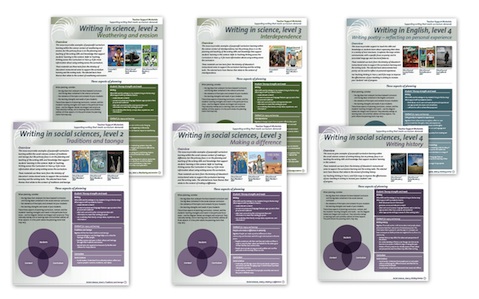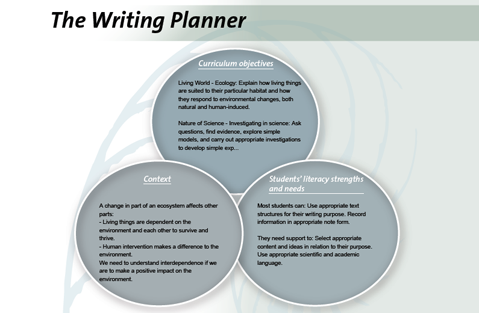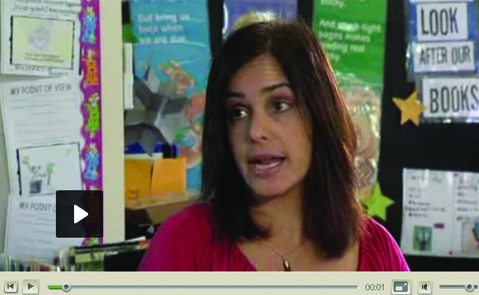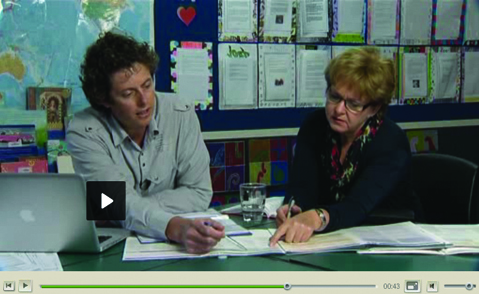Teacher support materials (TSMs)
The TSMs complement the year 4–8 resources in Teaching Writing in Years 1–8 by giving detailed guidance on teaching writing within specific learning areas. These materials will help you support your students to develop the knowledge and skills required for such writing.
There are six sets of TSMs – two each at curriculum levels 2, 3, and 4.
-
 TSM L2 Science Weathering & Erosion Supporting Writing (PDF, 2 MB)
TSM L2 Science Weathering & Erosion Supporting Writing (PDF, 2 MB) -
 TSM L2 Social Sciences Traditions & Taonga Supporting (PDF, 3 MB)
TSM L2 Social Sciences Traditions & Taonga Supporting (PDF, 3 MB) -
 TSM L3 Science Interdependence Supporting Writing (PDF, 2 MB)
TSM L3 Science Interdependence Supporting Writing (PDF, 2 MB) -
 TSM L3 Social Sciences Making a Difference Supporting (PDF, 3 MB)
TSM L3 Social Sciences Making a Difference Supporting (PDF, 3 MB) -
 TSM L4 English Writing Poetry Supporting Writing (PDF, 2 MB)
TSM L4 English Writing Poetry Supporting Writing (PDF, 2 MB) -
 TSM L4 Social Sciences Writing History Supporting Writing (PDF, 2 MB)
TSM L4 Social Sciences Writing History Supporting Writing (PDF, 2 MB)
Literacy planners
This section of the hub contains an interactive planner, called the Writing Planner, adapted from the Social Inquiry Planning Tool. The planner will help you to identify the writing demands of planned learning tasks and the teaching required for specific groups of students. It can be used to plan your teaching of writing in all curriculum contexts, including English.
This section of the hub also includes an exemplar for teaching writing in a science curriculum context (Living World – ecology). Completed plans can be stored in your account* on the Writing Hub and shared with colleagues.
![]() The Writing Planner Example Science (PDF, 345 KB)
The Writing Planner Example Science (PDF, 345 KB)
* Individual teacher account: Each teacher will be able to create an account, plan and save their lesson plans, and then share them with others.
Making writing judgments
This section will help you to differentiate between expectations for students’ writing at years 5 and 6 and at years 7 and 8. It includes case studies (with video) in which two teachers show how they plan for teaching writing in social sciences (years 5 and 6) and science (years 7 and 8) and how they make judgments against the National Standards through analysis of their students’ writing responses. The teachers describe:
- the needs of their students
- their planning, including the teaching context and the writing focus
- their deliberate acts of teaching
- their judgments about their students’ writing in relation to the National Standards.
The teachers explain how their judgments are based on close analysis of students’ writing, with detailed attention to features of the writing that demonstrate whether the students are meeting the expected standard. Annotated samples of the students’ work provide further evidence to support the teachers’ judgments.
For example, Kelly, the year 5–6 teacher, shows how she evaluates stories that her students have written as part of a social sciences study of how moving from place to place affects individuals and communities. She discusses particular features of her students’ writing that meet curriculum expectations at year 5 and at year 6 and shows how she differentiates between these.
Martin, the year 7–8 teacher, discusses how preparing for a science fair provides several authentic writing tasks, such as using science diaries to record research questions and observations. He describes what he looks for in the students’ journals to differentiate between writing at year 7 and at year 8.




